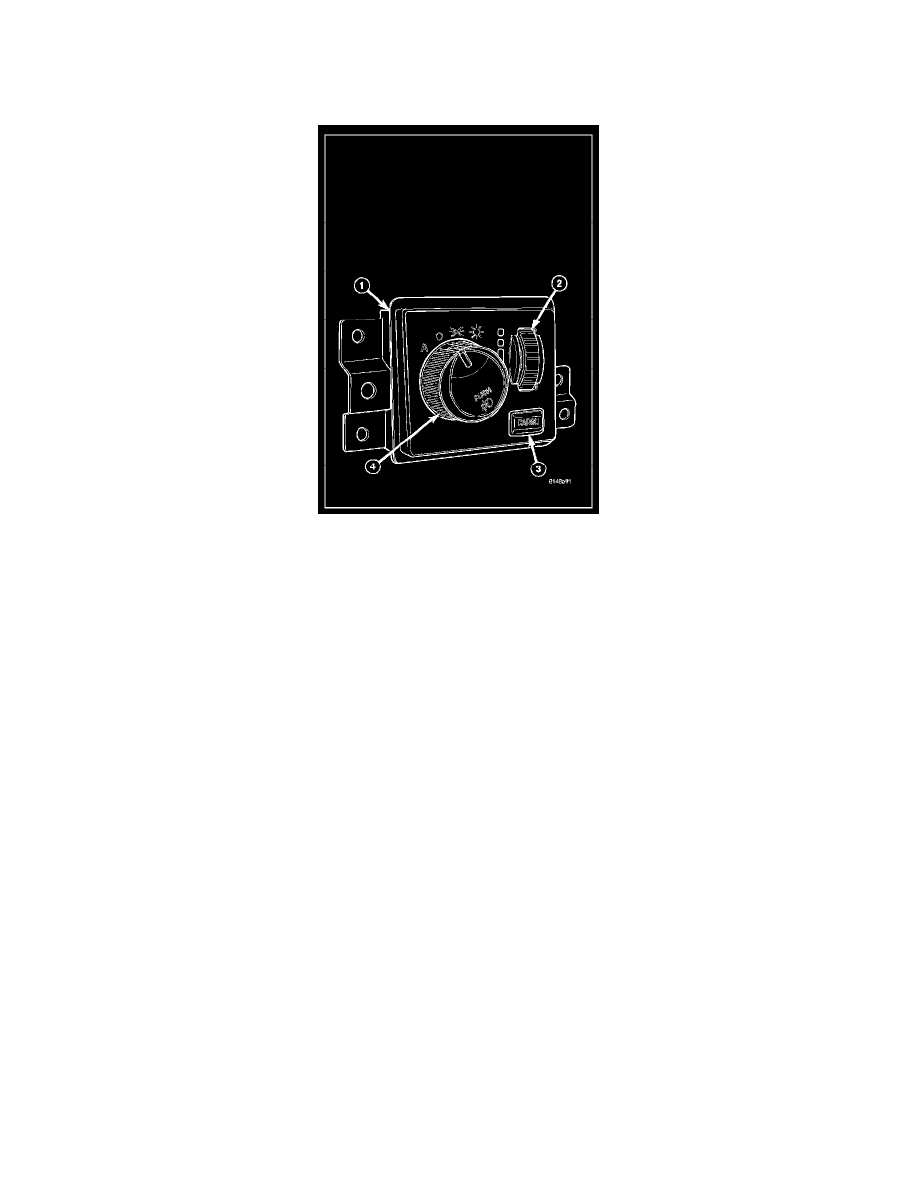Raider 2WD V6-3.7L (2008)

Headlamp Switch: Description and Operation
SWITCH - HEADLAMP
DESCRIPTION
The headlamp switch (1) is located on the instrument panel, to the left of the steering column. Three different switches are used. The standard switch
features a three-position rotary knob (4) for exterior lighting control, a thumbwheel (2) for panel lamps dimming and interior lighting control, and a
momentary push button (3) for cargo lamp control. An optional switch has a momentary PUSH function added to the rotary knob for front fog lamp
control. A second optional switch has the same thumbwheel and momentary push button, but has a fourth detent position added to the rotary knob for
selecting the optional automatic headlamps feature.
Each of these switches is constructed of molded plastic. The rotary knob is molded plastic and knurled around its circumference to ease operator control.
The thumbwheel is also plastic and knurled. On vehicles with optional fog lamps the rotary knob has the text PUSH and an International Control and
Display Symbol icon for Front Fog Light applied to it. The cargo lamp push button is plastic with a smooth finish and the text CARGO applied to it. The
switch face plate is also labeled with graphics and icons to clearly identify the many functions of the rotary knob and thumbwheel.
Three screws secure the switch to the back of the cluster bezel through integral mounting flanges that are molded to each side of the switch housing. The
back of the switch housing has an integral connector receptacle containing terminal pins that connect the switch to the vehicle electrical system through a
dedicated take out and connector of the instrument panel wire harness. A panel dimmer controlled incandescent bulb soldered to the circuit board within
the switch provides back lighting for visibility at night, but is not serviceable.
The headlamp switch cannot be repaired and, if ineffective or damaged, it must be replaced.
OPERATION
The headlamp switch uses two resistor multiplexed outputs and one conventional output to control the many functions and features it provides. The
switch receives a clean ground from the ElectroMechanical Instrument Cluster (EMIC) (also known as the Cab Compartment Node/CCN) on a headlamp
switch return circuit. It then provides outputs to the EMIC on a headlamp switch signal circuit to control exterior lighting functions, on a panel lamps
dimmer signal circuit to control panel dimmer and interior lighting functions, and on a cargo lamp return circuit to control the cargo lamps.
The switch illumination circuit receives a path to ground at all times through the left instrument panel ground circuit. The illumination level is controlled
by a Pulse-Width Modulated (PWM) output received from the EMIC on a headlamp switch illumination control circuit. The EMIC controls this output
based upon the dimmer signal select mux input from the headlamp switch.
The headlamp switch operates as follows:
-
Cargo Lamps Control - The cargo lamp push button on the headlamp switch is depressed to activate or deactivate the cargo lamps. The
headlamp switch provides an output to the EMIC, and the EMIC responds by providing the appropriate cargo lighting control outputs through its
internal cargo lamp driver circuit.
-
Front Fog Lamps Control - For vehicles so equipped, the rotary knob on the headlamp switch is depressed to activate or deactivate the optional
